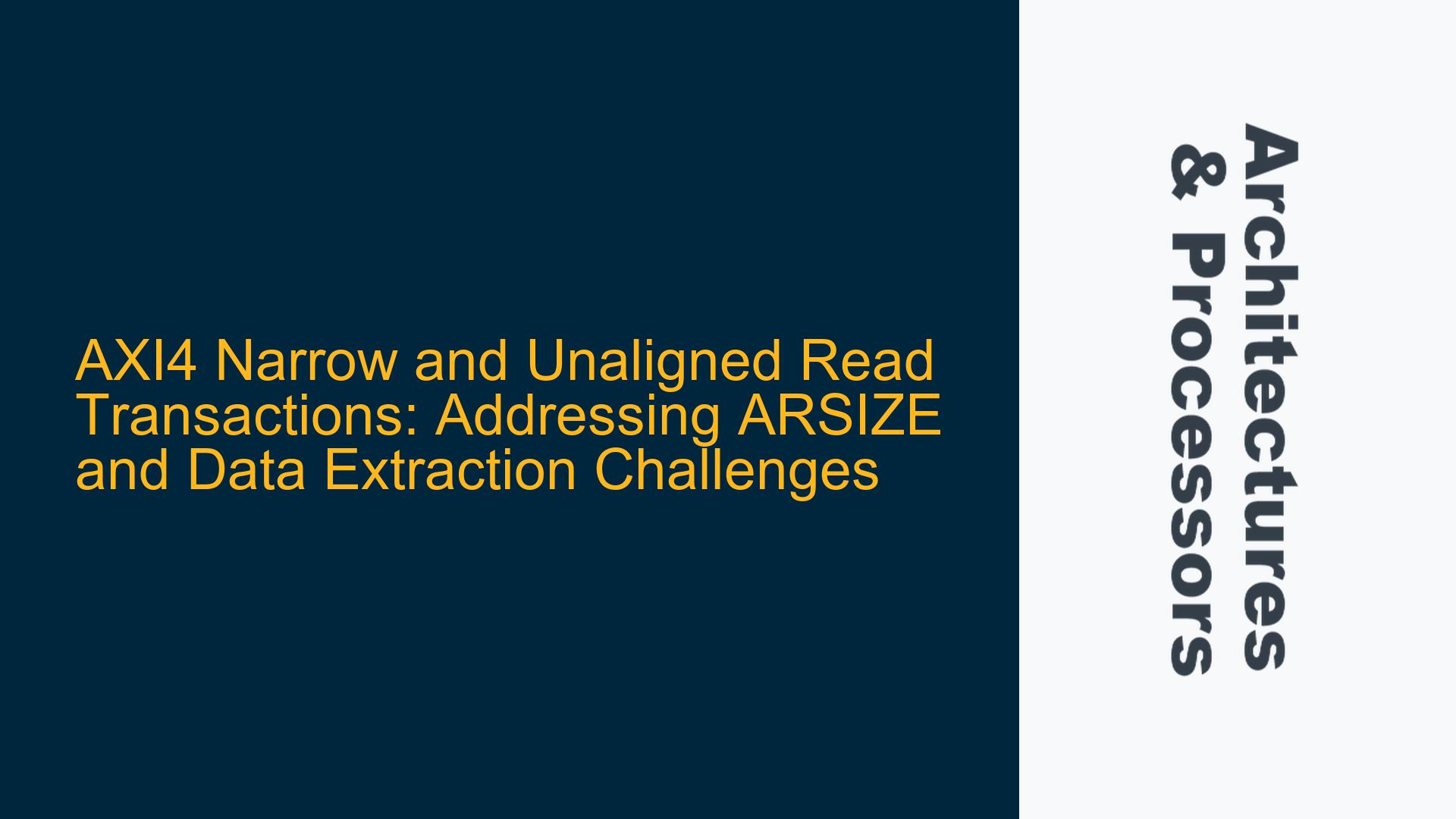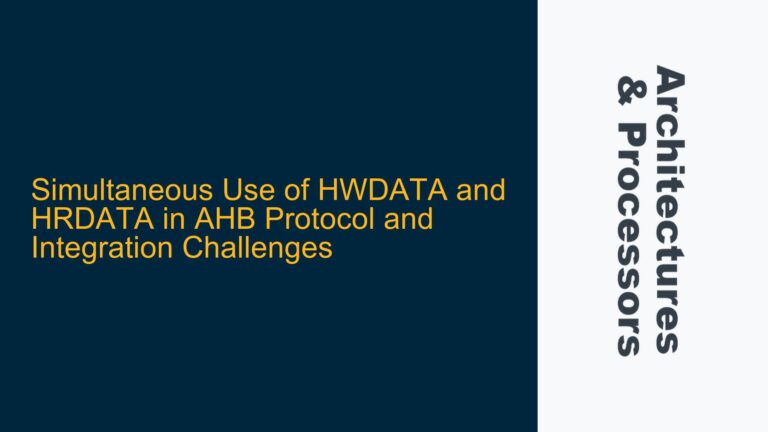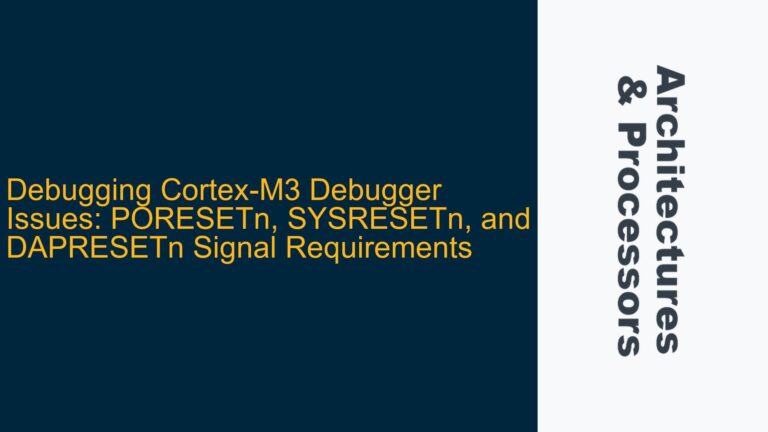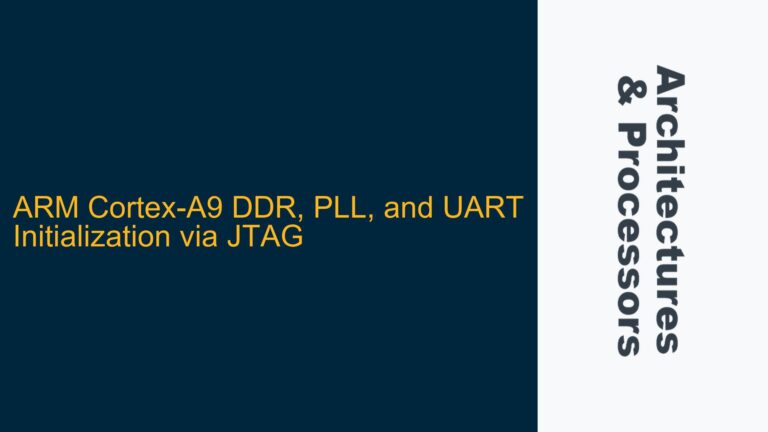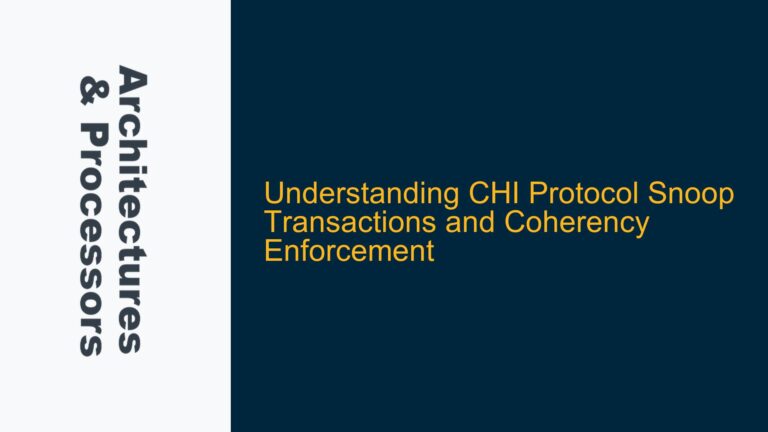Understanding AXI4 Narrow and Unaligned Read Transactions
The AXI4 protocol is a widely used interface standard for high-performance embedded systems, particularly in ARM-based designs. One of the more nuanced aspects of AXI4 is handling narrow and unaligned read transactions. Narrow transactions refer to data transfers where the data width is less than the full width of the AXI data bus. Unaligned transactions occur when the starting address of the transfer does not align with the natural boundaries of the data bus width. These scenarios are common in systems where memory access patterns are irregular or when specific data extraction is required.
In the context of a 16-byte AXI4 data bus, a request to read 3 bytes starting from an unaligned address (e.g., 0x4a7a) presents several challenges. The primary issue revolves around determining the correct ARSIZE (transfer size) and ensuring that the data returned is both accurate and efficiently extracted. The AXI4 protocol supports burst transfers with specific size constraints, and understanding how these constraints interact with narrow and unaligned accesses is critical for proper implementation.
The core of the problem lies in the fact that AXI4 only supports burst sizes that are powers of two (1, 2, 4, 8, etc.). This limitation means that a direct 3-byte read is not natively supported, and the system must rely on additional logic to extract the desired bytes from a larger transfer. Furthermore, unaligned accesses complicate the matter because the protocol handles such accesses differently depending on the ARSIZE and ARLEN (burst length) settings.
ARSIZE Selection and Its Impact on Unaligned Accesses
The ARSIZE signal in AXI4 defines the number of bytes transferred in each beat of a burst. For a 16-byte data bus, ARSIZE can range from 0 (1 byte) to 4 (16 bytes). When dealing with narrow and unaligned reads, the choice of ARSIZE directly impacts the efficiency and correctness of the data transfer.
Consider the example of reading 3 bytes starting from address 0x4a7a. Two potential ARSIZE values were proposed: 0x2 (4 bytes) and 0x3 (8 bytes). Each choice has implications for how the data is accessed and returned.
ARSIZE = 0x2 (4 Bytes)
With ARSIZE set to 0x2, the transfer would read 4 bytes per beat. However, since the starting address is unaligned (0x4a7a), the first beat of the transfer would only include bytes up to the next 4-byte boundary. In this case, the first beat would cover addresses 0x4a7a to 0x4a7d, but only the first 2 bytes (0x4a7a and 0x4a7b) would be valid for the requested 3-byte read. The remaining byte (0x4a7c) would be part of the next 4-byte boundary and would not be included in the first beat. This results in incomplete data retrieval and necessitates additional logic to handle the remaining byte.
ARSIZE = 0x3 (8 Bytes)
Setting ARSIZE to 0x3 would read 8 bytes per beat. This approach ensures that the entire 3-byte range (0x4a7a to 0x4a7c) is included within a single beat. However, it also means that additional bytes (0x4a7d to 0x4a81) are read unnecessarily, which can lead to inefficiencies in data transfer and processing. While this method simplifies the extraction of the desired bytes, it does so at the cost of increased bandwidth usage.
Key Considerations
The choice between ARSIZE = 0x2 and ARSIZE = 0x3 depends on the specific requirements of the system. If minimizing data transfer size is a priority, ARSIZE = 0x2 may be preferred, but it requires careful handling of unaligned accesses and additional logic to extract the desired bytes. On the other hand, ARSIZE = 0x3 simplifies the data extraction process but at the expense of increased bandwidth usage.
Implementing Efficient Data Extraction for Narrow and Unaligned Reads
To address the challenges of narrow and unaligned reads, a combination of proper ARSIZE selection and efficient data extraction logic is required. Below, we outline the steps and considerations for implementing a robust solution.
Step 1: Determine the Optimal ARSIZE
The first step is to select the appropriate ARSIZE based on the system’s requirements. For the 3-byte read example, the following options are available:
- ARSIZE = 0x0 (1 Byte): This option requires 3 beats to read the 3 bytes. While it ensures that only the necessary bytes are transferred, it is highly inefficient in terms of bandwidth usage.
- ARSIZE = 0x1 (2 Bytes): This option requires 2 beats to read the 3 bytes. It strikes a balance between efficiency and complexity but still requires additional logic to handle the unaligned access.
- ARSIZE = 0x2 (4 Bytes): This option requires 1 beat but may result in incomplete data retrieval for unaligned accesses. Additional logic is needed to handle the remaining byte.
- ARSIZE = 0x3 (8 Bytes): This option ensures that all 3 bytes are included in a single beat but transfers additional unnecessary bytes.
Step 2: Handle Unaligned Accesses
Unaligned accesses require special handling to ensure that the correct bytes are extracted from the transferred data. The following techniques can be employed:
- Data Masking: Use a mask to extract the desired bytes from the transferred data. For example, if ARSIZE = 0x2 is used, a mask can be applied to isolate the valid bytes (0x4a7a and 0x4a7b) and discard the rest.
- Address Calculation: Calculate the starting and ending addresses of the transfer to ensure that all desired bytes are included. For example, if ARSIZE = 0x3 is used, the starting address can be adjusted to align with the 8-byte boundary, ensuring that the 3-byte range is fully included.
Step 3: Optimize Bandwidth Usage
To minimize bandwidth usage, consider the following optimizations:
- Burst Length Adjustment: Adjust the ARLEN (burst length) to match the number of beats required for the transfer. For example, if ARSIZE = 0x1 is used, set ARLEN = 0x1 to ensure that only 2 beats are transferred.
- Data Packing: Pack multiple narrow transfers into a single wide transfer to reduce the number of beats. For example, if multiple 3-byte reads are required, they can be combined into a single 16-byte transfer, with each 3-byte segment extracted separately.
Step 4: Validate the Implementation
Finally, validate the implementation to ensure that the correct bytes are being transferred and extracted. This can be done through simulation and testing, with a focus on edge cases such as unaligned accesses and narrow transfers.
Example Implementation
Consider the following example implementation for reading 3 bytes starting from address 0x4a7a using ARSIZE = 0x2:
- Set ARSIZE = 0x2 (4 Bytes) and ARLEN = 0x0 (1 beat).
- Calculate the starting address: The starting address is 0x4a7a, which is unaligned with respect to the 4-byte boundary.
- Perform the transfer: The transfer reads 4 bytes starting from 0x4a7a, but only the first 2 bytes (0x4a7a and 0x4a7b) are valid for the requested 3-byte read.
- Extract the valid bytes: Use a mask to extract the first 2 bytes and discard the remaining bytes.
- Handle the remaining byte: Perform a second transfer with ARSIZE = 0x0 (1 byte) to read the remaining byte (0x4a7c).
This approach ensures that the correct bytes are transferred and extracted while minimizing bandwidth usage.
Conclusion
Handling narrow and unaligned read transactions in AXI4 requires a deep understanding of the protocol’s constraints and careful implementation of data extraction logic. By selecting the appropriate ARSIZE, handling unaligned accesses, and optimizing bandwidth usage, it is possible to achieve efficient and accurate data transfers. The key is to balance the trade-offs between transfer efficiency and implementation complexity, ensuring that the system meets its performance and functionality requirements.
